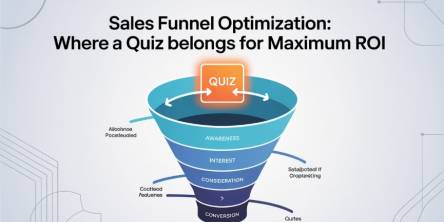The Top Benefits of Electronic Software Distribution

Before the widespread use and availability of the Internet, the most common way to receive and download software to a machine was through the mail using boxed physical software. Though this is still common in many cases, the evolution of software delivery has made electronic software delivery not only the fastest way to receive and download software; but it also the most price-friendly for software vendors. According to Wikipedia, Electronic Software Distribution (ESD) is used to describe “distribution over an online delivery medium, such as the Internet, thus bypassing physical distribution methods, such as paper, compact discs, and DVDs.” To deliver software electronically, vendors can deploy an electronic software distribution solution in the cloud or on-premises that give customers to ability to download software over the Web. Here are some reasons why software vendors benefit from electronic software distribution as opposed to boxed software:
Save on Fulfillment Costs
Software vendors that ship boxed software to customers as opposed to electronic downloads have to pay much higher costs per unit because of the fulfillment costs of assembly, packaging, storing and shipping. By electronically distributing software, vendors can nearly eliminate the costs of physical shipments and greatly reduce the unit cost. Although some customers will require software to be also sent on CDs and DVDs for backup, this is a fraction of the cost of sending every delivery using physical media.
Faster and More Efficient Service
Customers that need a critical software update or package immediately don’t have the time to wait around for days or weeks waiting on a USB or CD to show up in the mail. A great advantage of sending software electronically is the significantly higher speed of service to global customers. Not only are software updates and packages able to be downloaded immediately after release, but some distribution solutions enable the vendor to track whenever a customer downloads their software. Tracking all software deliveries in real time also greatly simplifies revenue recognition. By integrating software delivery solutions with a CRM system, vendors can easily maintain a single system of record for all software deliveries.
The most advantageous benefit of electronic software distribution is the ability to instantly deliver products around the clock in any time zone. If a distribution solution is deployed around the world in multiple data centers, customers can download software quickly from any remote location.
Better for the Environment
This benefit of electronic software distribution is often overlooked, but nonetheless must be given attention. According to an article by Gigaom, “every month in the United States some 100,000 pounds of CDs become outdated, useless or unwanted. Every year, more than 5.5 million software packages go to landfills and incinerators.” The article goes on to say how the materials found in these millions of CDs and DVDs (polycarbonate plastic, petroleum-based lacquer and paints, aluminum and other metals) wasted every year release chemicals that can cause environmental and health problems. Using “green” delivery alternatives like electronic software delivery, companies can tremendously lower their environmental impact.
Higher Level of Security
Enterprise software companies must send and receive software with the highest level of security as possible. These companies deliver software to customers (Fortune 500, government agencies, financial services, etc.) that must comply with very strict regulations and corporate policies, and thus must ensure that its method of software delivery is in compliance. Using a secure electronic software delivery solution enables vendors such as enterprise software companies to increase the security of software deliveries. For example, some Fortune 500 companies do not permit the use of USBs and CDs to receive software deliveries because they don’t comply with certain security policies. Those Fortune 500 companies can turn to an electronic software delivery solution that meets their security requirements for software delivery (encryption, antivirus scanning, tracking numbers for all deliveries, etc.) Software vendors that are searching for a compliant software delivery solution must make a detailed evaluation of all the possible solutions
Similar Articles
Business success has become reliant on efficiency and agility of the underlying technology infrastructure. Clearly, companies now depend on cloud computing to provide seamless services while managing exponential data growth.
Hospitals operate in environments where availability and patient safety are paramount at all times. As medical supply chains expand and regulatory oversight becomes more demanding, manual tracking methods introduce delays and risk.
Every sales funnel has one core goal: turn attention into revenue as efficiently as possible. Yet many funnels leak value at critical stages—visitors bounce, leads go cold, and sales teams chase prospects who were never a good fit.
Decentralized Finance (DeFi) has transformed how users earn passive income through blockchain-based financial systems. Among its most popular use cases,
Staying organized can feel like a full-time job. Between meetings, deadlines, and personal commitments, it’s easy to get overwhelmed.
Choosing the right GIS mapping software depends on what you need to accomplish. Some platforms cater to developers who want to build custom applications from scratch.
For data intensive industries such as insurance, the global business landscape is undergoing a profound transformation. Thanks to all the relentless technological innovation, this shift presents both significant challenges and unparalleled opportunities for modernization of the insurance sector.
Organizations are always looking for newer technologies to aid their operations. So, this hunt revolves around solutions that offer not only agility and scalability but are also cost-effective.
Not long ago, the idea of multiple AI agents working together, each with a specific role, collaborating to solve problems, felt like science fiction.









